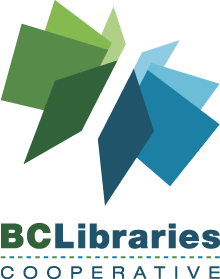A communication is in plain language if its wording and structure are designed for an audience to easily find what they need, understand what they find, and use that information.
Consider the diversity of your audiences:
- a variety of literacy levels and comprehension
- race (inclusivity and representation in photos)
- culture (use of western-developed icon and imagery that are not broadly understood in other cultures)
Respectful language
A library provides access to everyone and does not want to alienate users by using out-dated or disrespectful terminology.
- Ask people their preferences when planning programming, presentations, on the job, etc.
- Consider a person’s first identity when communicating with them: a patron (first identity) with a print disability (another identity), rather than “Dyslexic patron”. Note that the Canadian Government uses person-first language as their default.
- Do not use ableist language such as: crazy, tone deaf, blind eye, etc.
Plain language
Plain, or clear language, aims to increase clarity and reduce confusion by avoiding jargon or flowery language.
- Create content that is engaging but is aimed at a lower reading comprehension. Readers of all ages and abilities want to be able to locate the information they need easily but without barriers of unnecessarily complex sentence structure or terminology.
- Avoid figures of speech, idioms, and complicated metaphors. These are not always understood by those with different education background, or cultural upbringing.
- Also avoid using synonyms unnecessarily. Repetitive use of a single term is preferable than using terms interchangeably. For instance, if you refer to Overdrive in one section, don’t switch it to Library2Go in another.
- If you must use a term that may not be commonly understood, be sure to define it or to link to other content for clarity.
- Write in an active voice rather than passive.
- Remove unnecessary details that do not provide appropriate context.
- Spell check and proofread. This is an obvious thing to do, but it is also obviously more important now.
Note about Jargon
Much has been said about libraries avoiding jargon like Interlibrary Loans. However, sometimes these terms are useful in order to understand what the patron wants to happen: imagine trying to describe “borrowing from another library but using the mail system and checking out at your home branch” versus just saying Interlibrary Loan. The key is to define the term somewhere early in the process so that everyone knows what you mean. And, Interlibrary Loans is fairly self-explanatory.
Jargon that should be avoided:
- Spotlight, such as in the Highlight. This doesn’t really mean anything. Use Featured Service instead.
- Book a Librarian. This is an odd concept, if the term “to book” isn’t understood to mean “to reserve or request”. Use Ask a Librarian instead.
- Access Kanopy — it would be better to use more words such as: To browse the Kanopy collection.
- (What’s a “carousel”???)
Best Practices
The website is different than your social media in terms of “tone”. Use creative “marketing” language on your front page only, in one of the highlights, to guide users to the informational content within your website.
Library users want their informational needs answered quickly and concisely, so make sure to write descriptive and concise information in your web pages. Or, restrict some marketing language at the top of the page, in a short paragraph — such as at the top of the Summer Reading Club page. But the rest of the information should be structured so that content is easily identified, through the use of descriptive headers (see Content Design & Structure), and short plain language (as above).
More resources
- Decoda – Respectful Disability Language – British Columbia’s provincial literacy organization.
- Plain language checklist – from gov.bc.ca, quick checklist with links to more.
- Plain language tools – from gov.bc.ca, more tools and resources for learning about plain language principles
- Writing Principles for Web Content – from canada.ca, guideline for federal employees to create web content. Long, but good.
